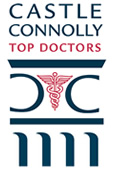Facelift
 A facelift (rhytidectomy) is a general term comprising many small operative maneuvers which together give the most powerful rejuvenating effect to the aging face. In the lower part of the face a facelift will treat the jowls and loose neck skin giving a sharp, crisp angle to the neck and chin junction. In the midface a facelift will help decrease nasolabial folds (the furrows extending from the outside of the nose to just alongside the corners of the mouth) and elevate the tissues below the cheeks. Patients may rediscover a fuller and more youthful upper cheek area following facelift surgery. Platysmal bands (the bands noted in the neck when one sticks out their chin and grins) are significantly improved with the facelift surgery. When the surgery is combined with eyelid and brow procedures, in the appropriate patient, a complete facial rejuvenation can be achieved.
A facelift (rhytidectomy) is a general term comprising many small operative maneuvers which together give the most powerful rejuvenating effect to the aging face. In the lower part of the face a facelift will treat the jowls and loose neck skin giving a sharp, crisp angle to the neck and chin junction. In the midface a facelift will help decrease nasolabial folds (the furrows extending from the outside of the nose to just alongside the corners of the mouth) and elevate the tissues below the cheeks. Patients may rediscover a fuller and more youthful upper cheek area following facelift surgery. Platysmal bands (the bands noted in the neck when one sticks out their chin and grins) are significantly improved with the facelift surgery. When the surgery is combined with eyelid and brow procedures, in the appropriate patient, a complete facial rejuvenation can be achieved.
The timing and cost of facelift surgery varies significantly depending on all of the areas which would need to be treated. Facelifts can run from three to six hours in length. Although these can be performed as an outpatient, most patients will appreciate having one night of postoperative observation and care in a hospital setting. The following day, drains are removed; and the patient is released to home. It is helpful to have some home assistance for a day following this surgery. By the end of the first week most patients can be out in public with sunglasses and possibly a scarf. In our experience most patients will wait approximately two weeks before returning to social engagements and work activities. There will be gradual decrease of swelling and the rejuvenative effects will become more refined during the six weeks following the procedure. Both men and women benefit from this surgical procedure.
What can a facelift do for me?
Facelifts, technically known as rhytidectomies (literally, "removal of wrinkles"), rejuvenate the mid- to lower face and neck. Facelifts are most effective for patients who want to correct:
- Midface sagging
- Deep creases under the eyes
- Deep creases between the nose and mouth (nasolabial folds)
- Jowls due to loss of muscle tone
- Sagging areas of fat
- Loose skin and fat under the chin and jaw
What won't a facelift correct?
Facelifts can produce a dramatic improvement in appearance for patients with the problems mentioned above. However, facelifts do not stop the aging process; in time, signs of aging will gradually appear once again.
Further, facelifts will not rejuvenate the brow, eyelids, nose, and some of the midface. Patients who want to improve these areas may consider combining a facelift with a brow lift or eyelid surgery (blepharoplasty).
Injectable soft-tissue fillers, facial implants and skin resurfacing can also enhance the effects of a facelift.
Am I a good candidate for a facelift?
The best candidates for rhytidectomy:
- Wish to improve one or more of the signs of aging indicated above
- Are men or women whose faces have begun to sag, but whose skin still has some elasticity
- Are generally healthy
- Do not smoke
- Have realistic expectations
- Are considering a facelift for personal reasons, not because someone else is pressuring them to do so
During your consultation, your doctor will discuss whether a facelift is right for you.
How is a rhytidectomy performed?
Facelifts are typically outpatient procedures and may be performed in an office-based facility, surgery center or hospital. Patients may have a choice of IV sedation or general anesthesia. The procedure takes about two hours.
The way a facelift is performed varies depending on the surgeon, the patient's facial structure, and the extent of correction desired. The three most common incision techniques are:
Traditional facelift: The "full" facelift for rejuvenating the face, jowls and neck, including fat sculpting, lifting and repositioning of muscle and deeper tissues, and skin trimming and redraping. The incision begins at the temples and travels down to the front of the ear, around the earlobe, and behind the ear to the lower scalp at the hairline. Sometimes, another incision is made under the chin.
Limited-incision facelift: For limited rejuvenation around the eyes and mouth, including nasolabial folds and other deep creases. Short incisions are made at the temples and around the ear, and possibly in the lower eyelids and/or under the upper lip as well.
Neck lift: A neck lift concentrates on jowls, loose skin on the neck, and fat under the chin. The incision is made around the ear lobe and behind the ear to the lower scalp.
In all three methods, incisions are closed with stitches or tissue glue. Scars are hidden in the hairline and natural contours of the face.
What is the recovery from a facelift like?
After your rhytidectomy, your doctor will wrap the incisions in bandages and may place drainage tubes in the area. The tubes will be taken out the next day, when your hair will be carefully washed. If surgical clips are used to hold the incisions closed, they will be removed one week after the facelift along with your stitches.
At first, you may experience swelling, numbness, bruising, and a feeling of tightness or tension in the face and neck. Your face may look uneven or distorted, and your facial muscles may feel stiff. Most of these usually resolve within 3-6 weeks, and sensation typically returns to normal within a few months. Scars become less red, raised, lumpy or itchy in time.
Many patients return to work by the third week. Camouflage cosmetics can be used to minimize the appearance of bruising.
You should be gentle with your skin and hair as you recover. Men may need to shave behind the neck and ears where areas of beard-growing skin have moved.
How long do the effects of a facelift last?
Results of a facelift do not last forever. You may want to have another procedure in five or ten years. But in another sense, the effects are permanent; years later, your face will continue to look better than if you had never had a facelift.
What are the risks of rhytidectomy?
Possible complications of facelift include: bleeding, infection, bruising, uneven swelling or discoloration, allergic reaction to the anesthesia, skin blistering (usually only seen in smokers), and temporary or permanent loss of sensation in the face. Your doctor will discuss the risks and benefits of a facelift with you before your surgery.
To view our photo gallery of before and after examples, please click here.








If you would like more information about Facelift or to schedule an appointment, feel free to fill out our convenient contact form or call us directly at 301.982.0202.